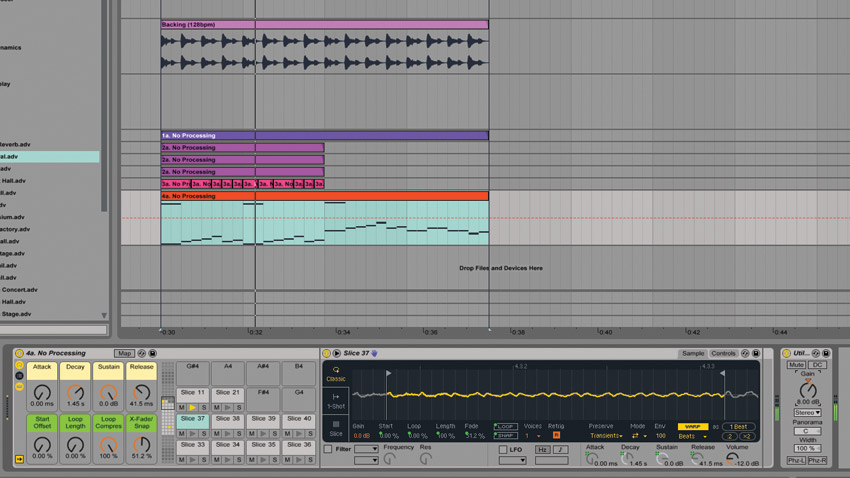How to make a bootleg remix: 6 tricks to try in your DAW
Get a ’leg up on the competition with our top tips

When you're getting down and dirty with your next bootleg remix, give these half dozen editing and processing tricks a whirl. They might just give it the qualitative edge it needs to placate the original artist…

1. Vocal isolation
If you’ve found a wicked vocal snippet, but there’s percussion or other unwanted sound mixed with it, blend it in by adjusting the volume until it sits well with your track, then use some simple low- and high-pass filtering to shift the focus to the vocal. A sneaky EQ boost at 3-5kHz can also bring out the vocal more without exciting other sounds in the sample.

2. The thick of it
Turning a one-dimensional, thin riff into a full-frequency monster is a great remixing hack. Make a copy of your riff sample, then pitch it down by 12 semitones. Some low-pass filtering and tape saturation will turn it into a thick bass layer. Making another copy of the original sound that’s pitched up 12 semitones with a slathering of effects will add a crisp high layer.

3. Embrace your imperfections
Slicing and dicing audio clips when bootlegging can require compromises in making the track fit your chosen style. Patchy-sounding edits, clicks, pops and distortion from excessive timestretching are all par for the course. Normally we’d edit out these imperfections, but why not make a feature of them? Doing this can give your bootleg a cut-up, lo-fi, sampled flavour.

4. Slice and resequence
A killer move when getting creative with a bootleg is to slice a loop of the song into individual hits using a drum pad sampler such as Ableton Live 9’s Drum Rack. After this, jam out a new groove by resequencing the slices live using a MIDI controller. To blend obvious gaps caused by the slicing, send the channel to a subtle delay or reverb.

5. BYO
Adding new sounds that layer over and mask parts of the track you’re bootlegging can be a great way of blending the original samples into your own production, while giving the whole piece a thicker, fuller sound. This trick is particularly good for adding a modern, glossy feel to old recordings without losing their original timbre.

6. Frequency tweaks
Clever EQ and volume automation chops can be a winner when making a full drum or percussion loop fit into your track. For example, you could chop a break’s kick drum out onto another channel and roll the low frequencies off to retain the loop’s tone and feel, while making space in the mix for your own low-frequency sounds to shine through.
Want all the hottest music and gear news, reviews, deals, features and more, direct to your inbox? Sign up here.
Computer Music magazine is the world’s best selling publication dedicated solely to making great music with your Mac or PC computer. Each issue it brings its lucky readers the best in cutting-edge tutorials, need-to-know, expert software reviews and even all the tools you actually need to make great music today, courtesy of our legendary CM Plugin Suite.
